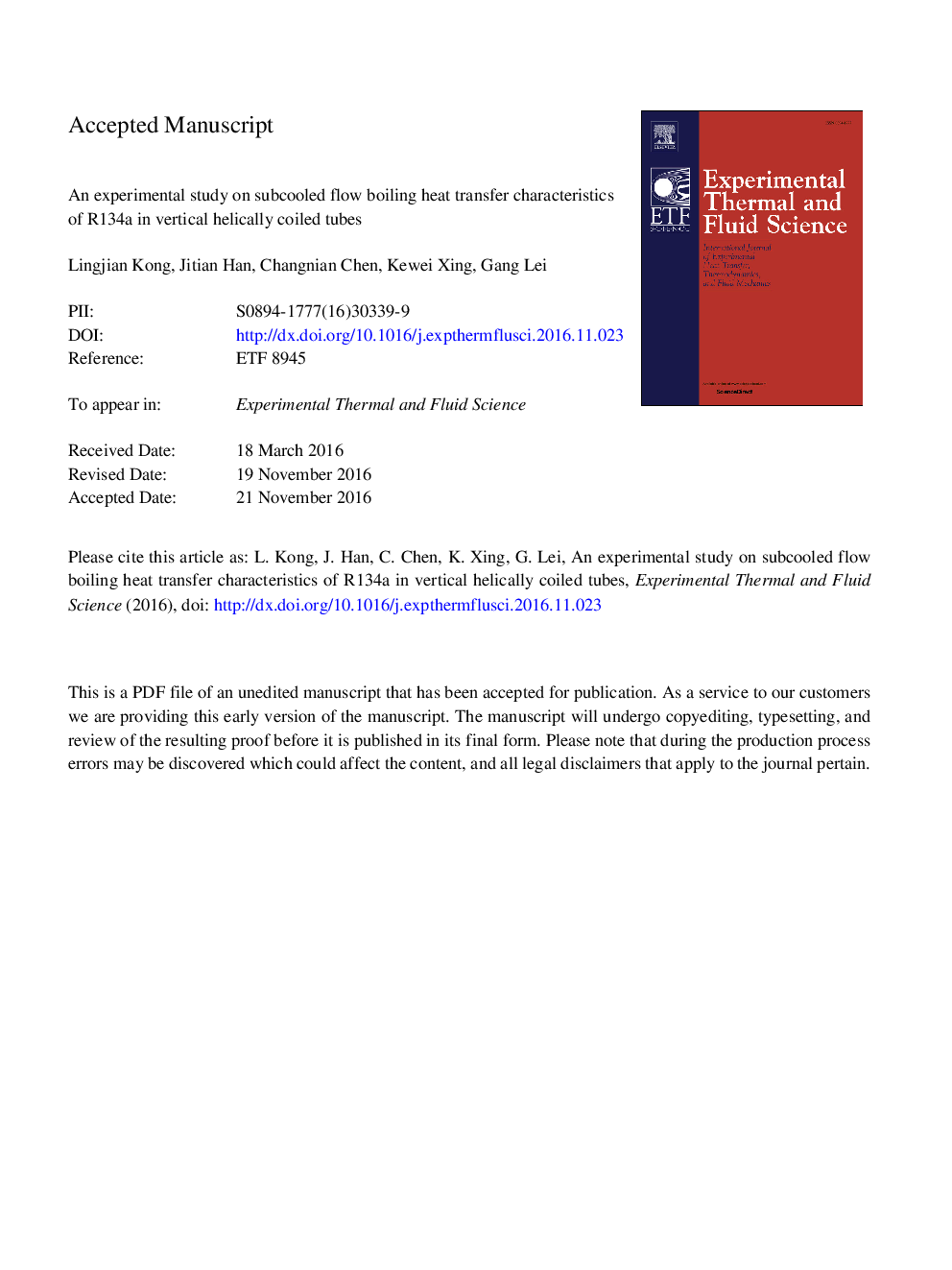| Article ID | Journal | Published Year | Pages | File Type |
|---|---|---|---|---|
| 4992765 | Experimental Thermal and Fluid Science | 2017 | 24 Pages |
Abstract
The helically coiled tubes with two-phase flow are widely used as heat transfer equipment in power stations, chemical plants, nuclear reactors, refrigeration systems, and many others. This paper investigates experimentally the subcooled boiling heat transfer characteristics of R134a in vertical helically coiled tubes with heat flux varying from 0.1 to 14.5 kW mâ2, mass flux from 147.5 to 443.7 kg mâ2 sâ1, inlet subcooled temperature from 4.7 to 15.0 °C and pressure from 450 to 850 kPa. Experimental results indicate that the generated bubbles always slide along the heated surface in the vertical helically coiled tube while the radial component force is negative, which contributes significantly to the heat transfer enhancement and nonuniformity of the wall temperature in subcooled flow boiling. Moreover, the temperature distribution in the vertical helically coiled tube is totally different from that of the horizontal one which is affected by the secondary flow, velocity profile of main flow and bubble behaviors. However, there is no much difference in the parametric effects on the heat transfer coefficient between vertical and horizontal arrangements. The heat transfer coefficients of vertical and horizontal helically coiled tube increase with system pressure, but decrease with subcooling. Based on the experimental data, the correlation of subcooled boiling heat transfer coefficient in helical coil is developed by using dimensional analysis, correlating 96.6% of the data within ±20%.
Related Topics
Physical Sciences and Engineering
Chemical Engineering
Fluid Flow and Transfer Processes
Authors
Lingjian Kong, Jitian Han, Changnian Chen, Kewei Xing, Gang Lei,
